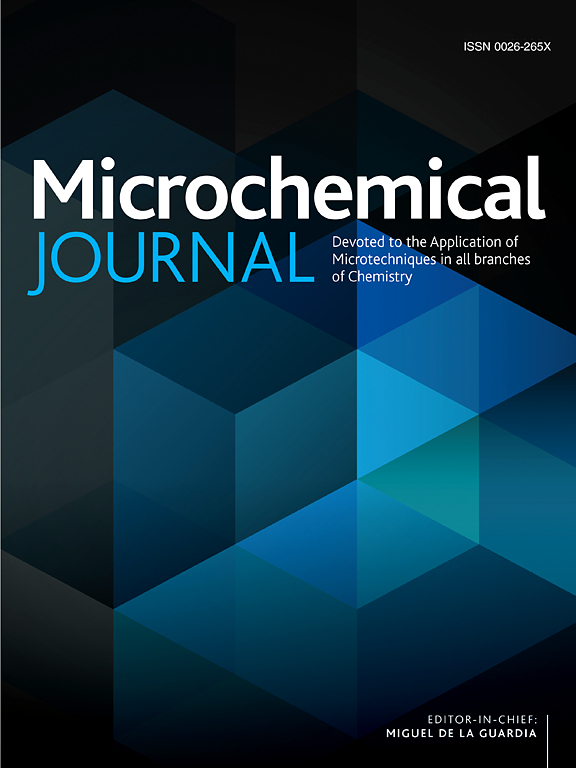A low-cost multi-layer microfluidic platform for on-site viability assessment of stem cells at single-cell resolution
IF 4.9
2区 化学
Q1 CHEMISTRY, ANALYTICAL
引用次数: 0
Abstract
The detection of stem cell activity is crucial for regenerative medicine and cell therapy. However, conventional methods for assessing cell viability are often time-consuming, costly, and result in the non-reusability of cells. In response to these challenges, we developed a low cost and label-free method for detection of cell viability with single-cell resolution, which is implemented by an integrated multi-layer microfluidic system (MLMS) enabling both cell culture and impedance sensing in real time. MLMS integrates a live cell-specific adhesion mechanism with single-cell microfluidic impedance detection. By the selective capture of living cells by fibronectin, live and dead cells can be counted separately, thereby allowing for accurate viability assessment. Fluorescent polystyrene microbeads were counted using both image recognition and impedance detection, demonstrating the high counting accuracy of MLMS. The detection accuracy of chips with micropores of various diameters was assessed using polystyrene (PS) beads of varying sizes. The results show that the chip with 60 μm micropores exhibits superior resolution and enables comprehensive cell detection. Furthermore, mixtures containing different ratios of live and dead cells were analyzed to assess cell viability using the MLMS. The obtained results were very close to the expected values. This work introduces a innovative low-cost, label-free, single-cell resolution solution for cell viability detection. Thereby, it hold promising application prospects in the monitoring and control of cell morphology and quantity during the stem cell culture process.
一种低成本的多层微流控平台,用于单细胞分辨率下干细胞的现场活力评估
干细胞活性的检测对再生医学和细胞治疗至关重要。然而,评估细胞活力的传统方法往往耗时、昂贵,并且导致细胞不可重复使用。为了应对这些挑战,我们开发了一种低成本、无标签的单细胞分辨率细胞活力检测方法,该方法由集成的多层微流体系统(MLMS)实现,可以实时进行细胞培养和阻抗传感。MLMS集成了活细胞特异性粘附机制和单细胞微流控阻抗检测。通过纤维连接蛋白选择性捕获活细胞,活细胞和死细胞可以分别计数,从而允许准确的活力评估。利用图像识别和阻抗检测对荧光聚苯乙烯微珠进行计数,表明MLMS计数精度高。采用不同尺寸的聚苯乙烯(PS)微珠对不同直径微孔芯片的检测精度进行了评价。结果表明,60 μm微孔芯片具有较好的分辨率,能够实现全面的细胞检测。此外,使用MLMS分析含有不同比例活细胞和死细胞的混合物,以评估细胞活力。所得结果与期望值非常接近。这项工作引入了一种创新的低成本、无标签、单细胞分辨率的细胞活力检测解决方案。因此,它在干细胞培养过程中对细胞形态和数量的监测和控制方面具有广阔的应用前景。
本文章由计算机程序翻译,如有差异,请以英文原文为准。
求助全文
约1分钟内获得全文
求助全文
来源期刊

Microchemical Journal
化学-分析化学
CiteScore
8.70
自引率
8.30%
发文量
1131
审稿时长
1.9 months
期刊介绍:
The Microchemical Journal is a peer reviewed journal devoted to all aspects and phases of analytical chemistry and chemical analysis. The Microchemical Journal publishes articles which are at the forefront of modern analytical chemistry and cover innovations in the techniques to the finest possible limits. This includes fundamental aspects, instrumentation, new developments, innovative and novel methods and applications including environmental and clinical field.
Traditional classical analytical methods such as spectrophotometry and titrimetry as well as established instrumentation methods such as flame and graphite furnace atomic absorption spectrometry, gas chromatography, and modified glassy or carbon electrode electrochemical methods will be considered, provided they show significant improvements and novelty compared to the established methods.
 求助内容:
求助内容: 应助结果提醒方式:
应助结果提醒方式:


